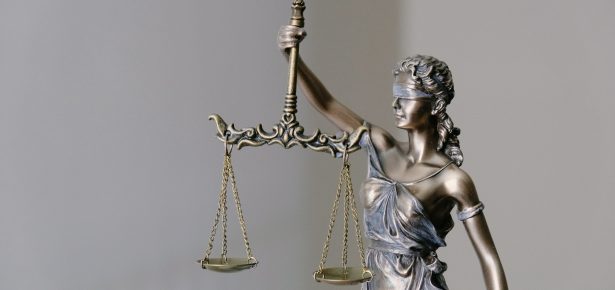
In January 2020, the UN International Commission of Inquiry on Syria issued a report detailing the activities of the different parties to the conflict(s), including non-State armed groups (NSAGs). The Commission affirmed that detentions by NSAGs were documented ‘in a consistent, discernible pattern’, recommending that they cease ‘arbitrarily detaining civilians, in particular individuals expressing dissent’. Syria is not an isolated example, and NSAGs from all around the world have undertaken similar practices, depriving individuals of their liberty for a variety of reasons. In Myanmar, it has been reported that the United League of Arakan (ULA)/Arakan Army (AA) has transferred three members of the armed forces whose detention was justified ‘by the military and political imperatives of the Arakanese revolution’. In the Ukraine, NSAGs held ‘mostly Ukrainian soldiers, civilians suspected of “espionage” or “pro-unity” sympathies, civilians suspected of criminal activities and members of the armed groups themselves (for various disciplinary and criminal misdeeds)’. In Somalia, al-Shaabab has reportedly detained schoolchildren and teachers for ‘spying for the US and being involved [in] recent drone strikes’. There are also documented examples of individuals detained in the past by the Liberation Tigers of Tamil Eelam (LTTE) in Sri Lanka, the Communist Party-Maoist (CPN-M) in Nepal, the Taliban in Afghanistan, the Moro Islamic Liberation Front (MILF) in the Philippines, the Fuerzas Armadas Revolucionarias de Colombia–Ejército del Pueblo (FARC-EP) in Colombia and the National Movement for the Liberation of Azawad (MNLA) in Mali.
Despite the increasing number of NSAGs detaining individuals, with the ICRC noting that 80 of such groups hold detainees in countries where it operates, little attention has been given to these practices and the motivations behind them. This is in spite of the fact that such an examination can serve (i) to ‘identify a set of consistent expectations’ with regard to NSAGs’ detention in NIACs (at 33), and (ii) to inform the debate on the law applicable to these scenarios.
I. Why do non-State armed groups detain? Some factual explanations
Based on interviews with members of various NSAGs, staff of international and local organizations, former detainees, and other key stakeholders, and a documentary analysis of NSAGs’ own codes of conduct, laws and regulations, four factual explanations can be identified as to why these groups detain in armed conflict:
(i) NSAGs detain enemy fighters and other individuals affiliated to their opponents because of military and security reasons, including detention to reduce the military power of opponents and to neutralize the ability of others to assist in this regard.
(ii) NSAGs detain their own members as a form of punishment in accordance with their own internal disciplinary framework, which can encompass both criminal and non-criminal acts.
(iii) NSAGs detain civilians for the commission of ‘common’ crimes (e.g. theft, drug use and domestic violence) in the context of the NSAGs’ governance activities in areas under their control;
(iv) NSAGs detain civilians and/or enemy fighters for the purposes of obtaining a benefit, either political (exchange of prisoners/legitimacy) or economic (ransom).
Of course, none of these reasons, in and of themselves, are sufficient to cover all specific aspects of detention by NSAGs. Their activities in this field may in fact combine elements of the four categories. It is indeed possible that individuals are detained as a result of various reasons. In addition, detainees may shift from one category to the other while being deprived of their liberty. For instance, enemy fighters may be detained in the midst of the battlefield as a result of their participation in hostilities and remain in detention until a ransom has been paid.
An assessment of the practices of NSAGs shows that their level of organization, their degree of control over territory and population and the party they are fighting against will have a direct impact on the way in which they approach their detention activities. For instance, the ‘Autonomous Administration of North-East Syria’ – a highly organized NSAG that exercises ‘de facto’ authority over a territory and population – has enacted written ‘laws’ providing a basis for parts of its detention activities, and even criminalize the actions of the members of Islamic State group in a similar way as many States have done. In contrast, the People’s Alliance for a Free and Sovereign Congo (Alliance du Peuple pour un Congo Libre et Souverain, APCLS), a Mayi-Mayi NSAG with a lower degree of organization and territorial control from the Democratic Republic of the Congo, had prior to 2018 a ‘public strategy’ that entailed the immediate release of enemy fighters who would be detained.
II. The road ahead: what can the humanitarian community do to protect individuals affected by NSAGs’ detention activities?
When assessing NSAGs’ detention practices, the main conclusions that stand out are that (i) they often believe to be based on certain valid reasons; and, (ii) contrary to conventional thought, they frequently include these reasons in written documents and non-written rules. A legal challenge remains, however, as to whether these sources are respectful of international legal standards and therefore can serve to prevent that NSAGs’ detentions are conducted arbitrarily. To solve this, two complementary steps can be undertaken by those trying to increase the protection of individuals in armed conflict. First, NSAGs should be encouraged to develop clear documents containing some ‘Basic Principles’ on detention based on minimum legal standards to regulate their activities. When appropriate, these ‘Principles’ should also rely on local values to get higher acceptance. Second, these should be complemented by supporting the adoption of other (and more elaborated) rules in the form of military decrees, ‘laws’, public communiqués and codes of conduct, should the level of organization and territorial control of the respective group allow it. This is so that the rules are communicated to the civilian community and other individuals potentially affected by these detention activities, thus enhancing their ability to understand the rules that the NSAG is applying.
Latest Comments
Have your say!